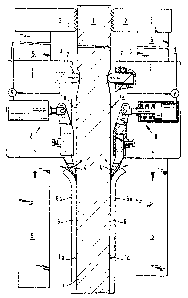Some of the information on this Web page has been provided by external sources. The Government of Canada is not responsible for the accuracy, reliability or currency of the information supplied by external sources. Users wishing to rely upon this information should consult directly with the source of the information. Content provided by external sources is not subject to official languages, privacy and accessibility requirements.
Any discrepancies in the text and image of the Claims and Abstract are due to differing posting times. Text of the Claims and Abstract are posted:
| (12) Patent: | (11) CA 1317562 |
|---|---|
| (21) Application Number: | 1317562 |
| (54) English Title: | METHOD AND APPARATUS FOR STRIPPING ELECTROLYTIC PRECIPITATE FROM SUPPORTING STRUCTURES |
| (54) French Title: | METHODE ET APPAREIL SERVANT A RETIRER DES PRECIPITES ELECTROLIQUES DE LEUR SUPPORT |
| Status: | Term Expired - Post Grant |
| (51) International Patent Classification (IPC): |
|
|---|---|
| (72) Inventors : |
|
| (73) Owners : |
|
| (71) Applicants : |
|
| (74) Agent: | NORTON ROSE FULBRIGHT CANADA LLP/S.E.N.C.R.L., S.R.L. |
| (74) Associate agent: | |
| (45) Issued: | 1993-05-11 |
| (22) Filed Date: | 1987-10-01 |
| Availability of licence: | N/A |
| Dedicated to the Public: | N/A |
| (25) Language of filing: | English |
| Patent Cooperation Treaty (PCT): | No |
|---|
| (30) Application Priority Data: | ||||||
|---|---|---|---|---|---|---|
|
(57) ABSTRACT
The invention relates to a method and apparatus for stripping
a thin, sheet-like layer of electrolytically accumulated
metal precipitate (6) from its supporting structures (1) by
means of a peeling blade (4) driven towards the upper edge of
the precipitate layer (6). For the stripping operation, the
supporting structure (1) is first attached to the stripping
station by aid of gripping members (2, 3), the frame whereof
advantageously provides a housing in common with the peeling
blades (4). Moreover, the measuring and control members (7,
8) which are advantageously located in the common housing, are
used in determining the surface profile of the supporting
structure (1), and the obtained profile is made use of while
choosing the orientation of the peeling blade (4).
Note: Claims are shown in the official language in which they were submitted.
Note: Descriptions are shown in the official language in which they were submitted.

2024-08-01:As part of the Next Generation Patents (NGP) transition, the Canadian Patents Database (CPD) now contains a more detailed Event History, which replicates the Event Log of our new back-office solution.
Please note that "Inactive:" events refers to events no longer in use in our new back-office solution.
For a clearer understanding of the status of the application/patent presented on this page, the site Disclaimer , as well as the definitions for Patent , Event History , Maintenance Fee and Payment History should be consulted.
| Description | Date |
|---|---|
| Inactive: Expired (old Act Patent) latest possible expiry date | 2010-05-11 |
| Grant by Issuance | 1993-05-11 |
There is no abandonment history.
| Fee Type | Anniversary Year | Due Date | Paid Date |
|---|---|---|---|
| MF (category 1, 5th anniv.) - standard | 1998-05-11 | 1998-04-14 | |
| MF (category 1, 6th anniv.) - standard | 1999-05-11 | 1999-04-14 | |
| MF (category 1, 7th anniv.) - standard | 2000-05-11 | 2000-04-13 | |
| MF (category 1, 8th anniv.) - standard | 2001-05-11 | 2001-04-17 | |
| MF (category 1, 9th anniv.) - standard | 2002-05-13 | 2002-04-16 | |
| MF (category 1, 10th anniv.) - standard | 2003-05-12 | 2003-04-16 | |
| MF (category 1, 11th anniv.) - standard | 2004-05-11 | 2004-04-13 | |
| MF (category 1, 12th anniv.) - standard | 2005-05-11 | 2005-04-13 | |
| MF (category 1, 13th anniv.) - standard | 2006-05-11 | 2006-04-13 | |
| MF (category 1, 14th anniv.) - standard | 2007-05-11 | 2007-04-13 | |
| MF (category 1, 15th anniv.) - standard | 2008-05-12 | 2008-04-16 | |
| MF (category 1, 16th anniv.) - standard | 2009-05-11 | 2009-04-30 |
Note: Records showing the ownership history in alphabetical order.
| Current Owners on Record |
|---|
| OUTOKUMPU OY |
| Past Owners on Record |
|---|
| MATTI OLAVI LEIPONEN |
| OLLI ERKKI YLIMAKI |
| PENTTI KAARLO KUJANPAA |
| SEPPO JUHANI ERLAMO |